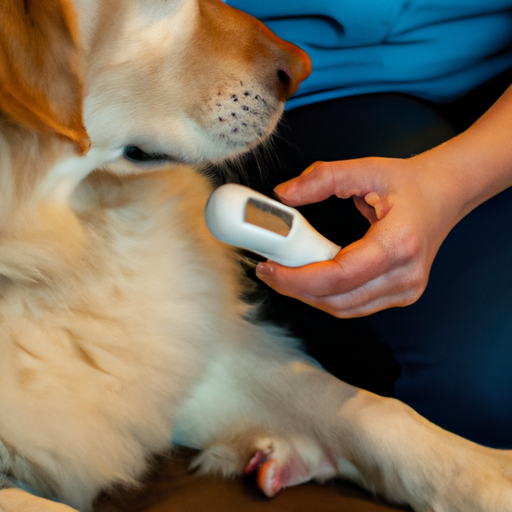As a caregiver, there will be times when your furry friend may not feel well. If your dog is diagnosed with diabetes, it’s critical to understand how to check your dog’s blood sugar. This guide will empower you with the knowledge and confidence to manage your dog’s health with ease.
Why Checking Your Dog’s Blood Sugar is Essential
Monitoring your dog’s blood sugar level is crucial, especially if they have diabetes. Regular checks can help you:
- Understand how your dog’s diet and lifestyle affect their blood sugar.
- Detect early signs of dangerously high or low blood sugar levels.
- Aid your vet in adjusting your dog’s medication and treatment plan.
Just like humans, dogs with diabetes need to have their blood sugar managed to prevent complications like heart disease, kidney failure, or vision loss.
When to Check Your Dog’s Blood Sugar
Your vet is your best resource for determining the frequency of blood sugar checks. However, there are certain situations when you should check your dog’s blood sugar:
- Before meals.
- Before administering insulin.
- When your dog is acting unusually.
- During periods of illness or stress.
How to Check Your Dog’s Blood Sugar
Checking your dog’s blood sugar is a straightforward process. Here’s a step-by-step guide:
- Prepare the Glucose Meter: Make sure the glucose meter and test strips are ready. Use a pet-specific meter for accurate results.
- Collect a Blood Sample: The best spots to get a blood sample from your dog are the inner lip or the ear flap. Wipe the area clean, prick the skin with a lancet, and gently squeeze to collect a drop of blood.
- Measure the Blood Sugar Level: Place the blood sample on the test strip and wait for the glucose meter to display the result.
Interpreting Blood Sugar Levels
The normal blood sugar level for dogs is typically between 75 and 120 mg/dL. Here’s a simple table to help you interpret the results:
| Blood Sugar Level (mg/dL) | Status |
|---|---|
| Below 60 | Dangerously Low |
| 60-75 | Low |
| 75-120 | Normal |
| 120-250 | High |
| Above 250 | Dangerously High |
If your dog’s blood sugar is too high or too low, contact your vet immediately.
Frequently Asked Questions
Q: Can I use a human glucose meter for my dog?
A: While it’s technically possible, it’s not recommended. Human meters are calibrated differently and may give inaccurate results.
Q: How often should I check my dog’s blood sugar?
A: It depends on your dog’s health condition. Your vet will provide a specific schedule.
Q: What if my dog’s blood sugar is too low or too high?
A: Contact your vet immediately. They might need to adjust your dog’s diet, exercise, or medication.
Remember, as a caregiver, you have a significant role in managing your dog’s health. Regular checks, a proper diet, and regular exercise can help your dog live a longer, healthier life.



